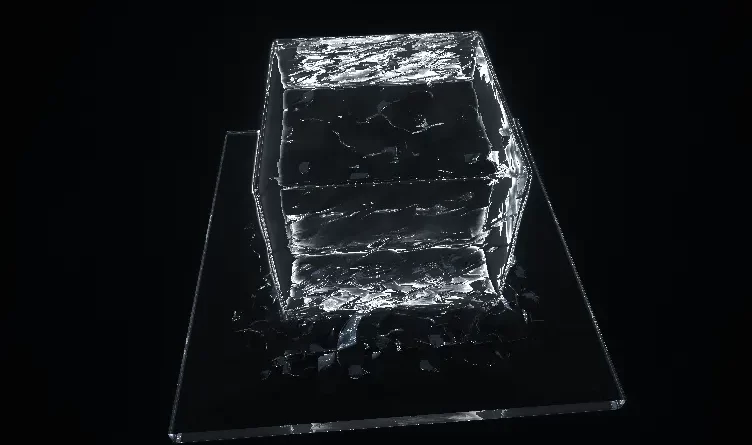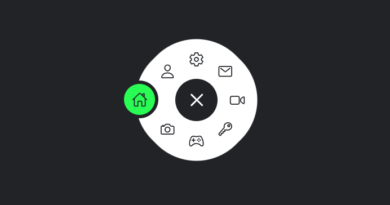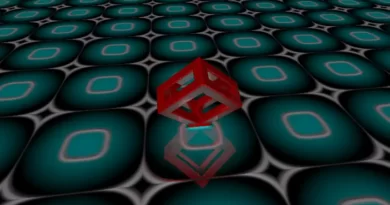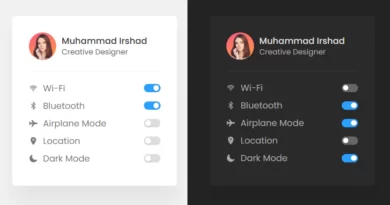3D Rotating Ice Cube Animation With CSS & JavaScript
We can build an 3d animated rotating ice cube using HTML, CSS, and JavaScript. In this tutorial, I’ll demonstrate how to use HTML, CSS, and JavaScript to create a beautiful animated 3d rotating animation.
HTML will be used to build the structure. The styling will be added using CSS, and the password entry will be functional thanks to JavaScript. Visit our website for more HTML, CSS, and JavaScript projects.
Source Code:
HTML(Pug):
canvas#canvas
——————————
📂 Important Links:
——————————
>> Learn Graphics Design & Make A Successful Profession.
>> Canva Makes Graphics Design Easy.
>> Start Freelancing Today & Earn Money.
>> Make Video Editing As Your Profession.
CSS:
* {
box-sizing: border-box;
}
html,
body {
margin: 0;
min-height: 100vh;
overflow: hidden;
background: repeating-radial-gradient(
circle at center,
#444 0 10%,
#111 10% 20%
);
touch-action: none;
}
canvas {
width: 100%;
height: auto;
object-fit: contain;
}
Another Article for you.
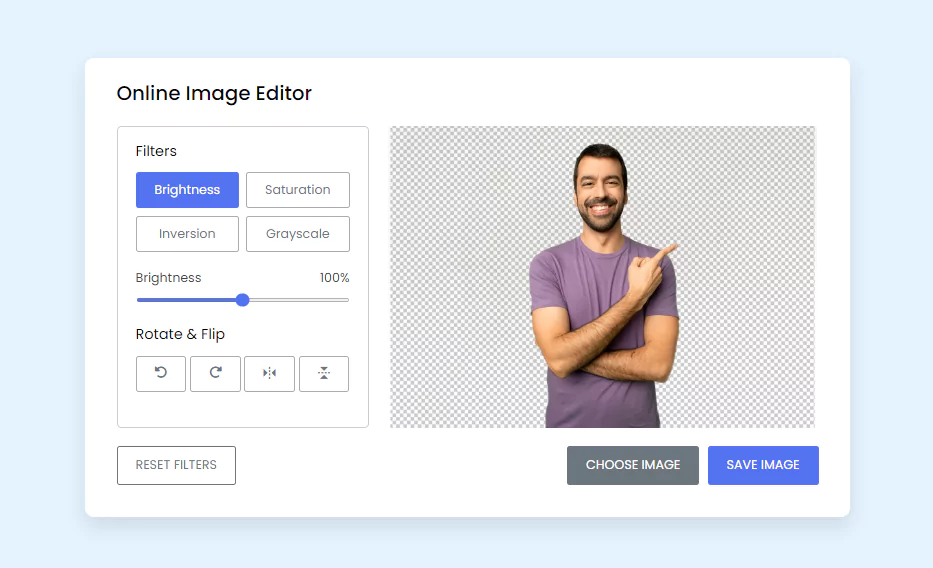
JavaScript:
const canvas = window.canvas;
const gl = canvas.getContext("webgl2");
const dpr = Math.max(1, 0.5 * window.devicePixelRatio);
/** @type {Map<string,PointerEvent>} */
const touches = new Map();
const vertexSource = `#version 300 es
#ifdef GL_FRAGMENT_PRECISION_HIGH
precision highp float;
#else
precision mediump float;
#endif
in vec2 position;
void main(void) {
gl_Position = vec4(position, 0., 1.);
}
`;
const fragmentSource = `#version 300 es
/*********
* made by Matthias Hurrle (@atzedent)
*/
#ifdef GL_FRAGMENT_PRECISION_HIGH
precision highp float;
#else
precision mediump float;
#endif
out vec4 fragColor;
uniform vec2 resolution;
uniform vec2 touch;
uniform float time;
uniform int pointerCount;
#define mouse (touch.xy / resolution.xy)
#define T mod(time, 200.)
#define S smoothstep
#define rot(a) mat2(cos(a),sin(a),-sin(a),cos(a))
mat3 rotX(float a) {
float s = sin(a),
c = cos(a);
return mat3(
vec3(1, 0, 0),
vec3(0, c,-s),
vec3(0, s, c)
);
}
mat3 rotY(float a) {
float s = sin(a),
c = cos(a);
return mat3(
vec3(c, 0, s),
vec3(0, 1, 0),
vec3(-s,0, c)
);
}
float tick(float t, float e) {
return floor(t)+pow(S(.0, 1., fract(t)), e);
}
float rnd(float a) {
return fract(sin(a*76.5453123)*45617.234);
}
float noise(vec2 p) {
vec2 i = floor(p);
vec2 f = fract(p);
float n = i.x + i.y * 57.;
return mix(
mix(rnd(n), rnd(n + 1.), f.x),
mix(rnd(n + 57.), rnd(n + 58.), f.x),
f.y
);
}
float fbm(vec2 p) {
float f = .0;
mat2 m = mat2(1.6, 1.2, -1.2, 1.6);
f = .5000*noise(p); p = m*p;
f += .2500*noise(p); p = m*p;
f += .1250*noise(p); p = m*p;
f += .0625*noise(p); p = m*p;
return f;
}
float smin(float a, float b, float k) {
float h = clamp(
.5+.5*(b-a)/k,
.0,
1.
);
return mix(b, a, h)-k*h*(1.-h);
}
float box(vec3 p, vec3 s, float r) {
p = abs(p)-s;
return length(max(p, .0))+
min(.0, max(max(p.x, p.y), p.z))-r;
}
float map(vec3 p) {
// instead of 'noise' use 'fbm' if you want it
// to be more realistic. However, it is slower.
float d =
box(p, vec3(1), .05) *
S(.0, 1.,clamp(noise((p.xz+p.yy)*6.),.4,.6));
d = smin(
d,
box(
p-vec3(0, -1, 0),
vec3(2,.1, 2), .0),
.25
);
return d;
}
vec3 norm(vec3 p) {
vec2 e = vec2(1e-2, 0);
float d = map(p);
vec3 n = d-vec3(
map(p-e.xyy),
map(p-e.yxy),
map(p-e.yyx)
);
return normalize(n);
}
vec3 dir(vec2 uv, vec3 ro, vec3 t, float z) {
vec3 up = vec3(0, 1, 0),
f = normalize(t-ro),
r = normalize(cross(up, f)),
u = cross(f, r),
c = f*z,
i = c+uv.x*r+uv.y*u,
d = normalize(i);
return d;
}
void main(void) {
vec2 uv = (
gl_FragCoord.xy -.5 * resolution.xy
) / min(resolution.x, resolution.y);
vec3 col = vec3(0),
ro = vec3(0, 0, -4);
ro.y += 4.*sin(tick(T*.5, 2.)*acos(.0));
ro *= rotY(tick(T*.25, 5.)*acos(.0));
if (pointerCount > 0) {
ro = vec3(0, 0, -4);
ro *= rotX(mouse.y * acos(-1.)+1.);
ro *= rotY(mouse.x * acos(-1.)*2.);
}
vec3 rd = dir(uv, ro, vec3(0), 1.),
p = ro;
vec3 tint = vec3(.6,.8, 1);
float i = .0,
at = .0,
side = 1.;
for (; i < 80.; i++) {
float d = map(p)*side;
if (d < 1e-3) {
vec3 n = norm(p)*side,
l = normalize(ro-.1),
r = normalize(rd);
if (dot(l, n) < .0) l = -l;
vec3 h = normalize(l-r);
float fres = pow(1.-max(.0, dot(-rd, n)), 5.),
diff = pow(max(.0, dot(l, n)), 4.),
fog = S(.5,.8, i/120.);
col += fog + diff * fres * (
.8*pow(max(.0, dot(h, n)), 12.) +
.6*pow(max(.0, dot(rd, n)), 28.)
);
col += .125*fres*tint;
side = -side;
vec3 rdo = refract(rd, n, 1.+.45*side);
if (dot(rdo, rdo) == .0) {
rdo = reflect(rd, n);
}
rd = rdo;
d = 9e-2;
}
if (d > 20.) break;
p += rd*d;
at += .1*(.1/d);
}
col += at*.001+i/800.*tint;
fragColor = vec4(col, 1.);
}
`;
let time;
let buffer;
let program;
let touch;
let resolution;
let pointerCount;
let vertices = [];
let touching = false;
function resize() {
const { innerWidth: width, innerHeight: height } = window;
canvas.width = width * dpr;
canvas.height = height * dpr;
gl.viewport(0, 0, width * dpr, height * dpr);
}
function compile(shader, source) {
gl.shaderSource(shader, source);
gl.compileShader(shader);
if (!gl.getShaderParameter(shader, gl.COMPILE_STATUS)) {
console.error(gl.getShaderInfoLog(shader));
}
}
function setup() {
const vs = gl.createShader(gl.VERTEX_SHADER);
const fs = gl.createShader(gl.FRAGMENT_SHADER);
program = gl.createProgram();
compile(vs, vertexSource);
compile(fs, fragmentSource);
gl.attachShader(program, vs);
gl.attachShader(program, fs);
gl.linkProgram(program);
if (!gl.getProgramParameter(program, gl.LINK_STATUS)) {
console.error(gl.getProgramInfoLog(program));
}
vertices = [-1.0, -1.0, 1.0, -1.0, -1.0, 1.0, -1.0, 1.0, 1.0, -1.0, 1.0, 1.0];
buffer = gl.createBuffer();
gl.bindBuffer(gl.ARRAY_BUFFER, buffer);
gl.bufferData(gl.ARRAY_BUFFER, new Float32Array(vertices), gl.STATIC_DRAW);
const position = gl.getAttribLocation(program, "position");
gl.enableVertexAttribArray(position);
gl.vertexAttribPointer(position, 2, gl.FLOAT, false, 0, 0);
time = gl.getUniformLocation(program, "time");
touch = gl.getUniformLocation(program, "touch");
pointerCount = gl.getUniformLocation(program, "pointerCount");
resolution = gl.getUniformLocation(program, "resolution");
}
function draw(now) {
gl.clearColor(0, 0, 0, 1);
gl.clear(gl.COLOR_BUFFER_BIT);
gl.useProgram(program);
gl.bindBuffer(gl.ARRAY_BUFFER, buffer);
gl.uniform1f(time, now * 0.001);
gl.uniform2f(touch, ...getTouches());
gl.uniform1i(pointerCount, touches.size);
gl.uniform2f(resolution, canvas.width, canvas.height);
gl.drawArrays(gl.TRIANGLES, 0, vertices.length * 0.5);
}
function getTouches() {
if (!touches.size) {
return [0, 0];
}
for (let [id, t] of touches) {
const result = [dpr * t.clientX, dpr * (innerHeight - t.clientY)];
return result;
}
}
function loop(now) {
draw(now);
requestAnimationFrame(loop);
}
function init() {
setup();
resize();
loop(0);
}
document.body.onload = init;
window.onresize = resize;
canvas.onpointerdown = (e) => {
touching = true;
touches.set(e.pointerId, e);
};
canvas.onpointermove = (e) => {
if (!touching) return;
touches.set(e.pointerId, e);
};
canvas.onpointerup = (e) => {
touching = false;
touches.clear();
};
canvas.onpointerout = (e) => {
touching = false;
touches.clear();
};

